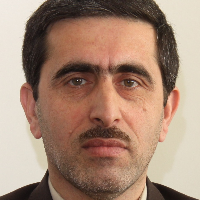Modeling the Structural Equations of Irrational Beliefs and Impulsivity Readiness Mediated by Emotional Control in High School Students
One of the factors that can affect adolescents' behavior, especially in emotional situations, is impulsivity. This study aimed to model the structural equations of irrational beliefs and impulsivity readiness mediated by emotional control in high school students.
The present study was an analytical–correlational based on structural equation modeling. The study’s statistical population included all high school students in the city of Kuhdasht, Iran (3684 people) in the academic year 2020–2021. Of whom, 400 people were selected as a sample by multi–stage cluster sampling. In this study, considering 17 obvious variables and the probability of subjects falling, increasing the accuracy and generalizability of the results, 400 samples were selected. The inclusion criteria were as follows: secondary school students in Kuhdasht City, interested in cooperating in research, and without any physical or mental illness (based on the information in the student's academic records). The exclusion criteria were as follows: lack of cooperation in research and having any physical and mental illness. To collect the required data, the following questionnaires were used: the irrational beliefs questionnaire (Jones, 1968), the impulsivity readiness questionnaire (Bart et al., 2004), and the emotional control questionnaire (Grenfsky & Karaji, 2006). Also, for data analysis, structural equation modeling was used using SPSS23 and Amos22 software at a significance level of 0.05.
The Pearson correlation analysis showed a significant inverse correlation between emotional control variables and irrational beliefs (p<0.001) and a direct and significant correlation between emotional control variables with impulsivity readiness (p<0.001). Also, a significant inverse correlation (p<0.001) was observed between the variables of impulsivity readiness and irrational beliefs. Besides, the direct effects of irrational beliefs on emotional control (β=–0.53; p<0.001), emotional control on impulsivity readiness (β=0.24; p<0.001), and irrational beliefs on impulsivity readiness (β=–0.22; p<0.001) were significant. On the other hand, the indirect effect of irrational beliefs on impulsivity readiness mediated by emotional control (β=–0.12; p<0.001) was significant. Also, the effect of total irrational beliefs on impulsivity readiness (β=–0.34; p<0.001) was significant. Moreover, good fit indices indicated a good fit of the model (X2/df=2.63, AGFI=0.917, GFI=0.894, CFI=0.916, RMSEA=0.064).
Based on the study findings, irrational beliefs mediate emotional control in students' impulsivity readiness. According to our findings, it is suggested that counselors and psychologists give special counseling and training to students whose emotional impulsivity is high so that they do not get upset quickly in the face of unforeseen events, can be satisfied in different situations, and experience less pressure, be more flexible, and be a calm and cool person. Also, psychologists should teach students that their assigned tasks are not imposed on them and that they should not think too ideally and know that with proper effort, they can successfully perform the assigned tasks. Finally, school psychologists should check the students' emotional impulsivity status, and conduct training courses if the impulsivity is inappropriate for them.
-
The Effect of Educational Leadership Based on Emotional Intelligence on Self-control and Classroom Management Style in Elementary School Teachers
Mojtaba Sharifidaramadi *,
Journal of Educational Leadership Research, Summer 2025 -
Analysis of intellectual structure of sex education studies based on articles indexed in Web of Science
Majid Firouzkouhi Berenjabadi *, Soghra Ebrahimi Qawam, Hasan Asadzadeh, Esmaiel Sadipour, Noorali Farrokhi
Educational Psychology, Spring 2025



